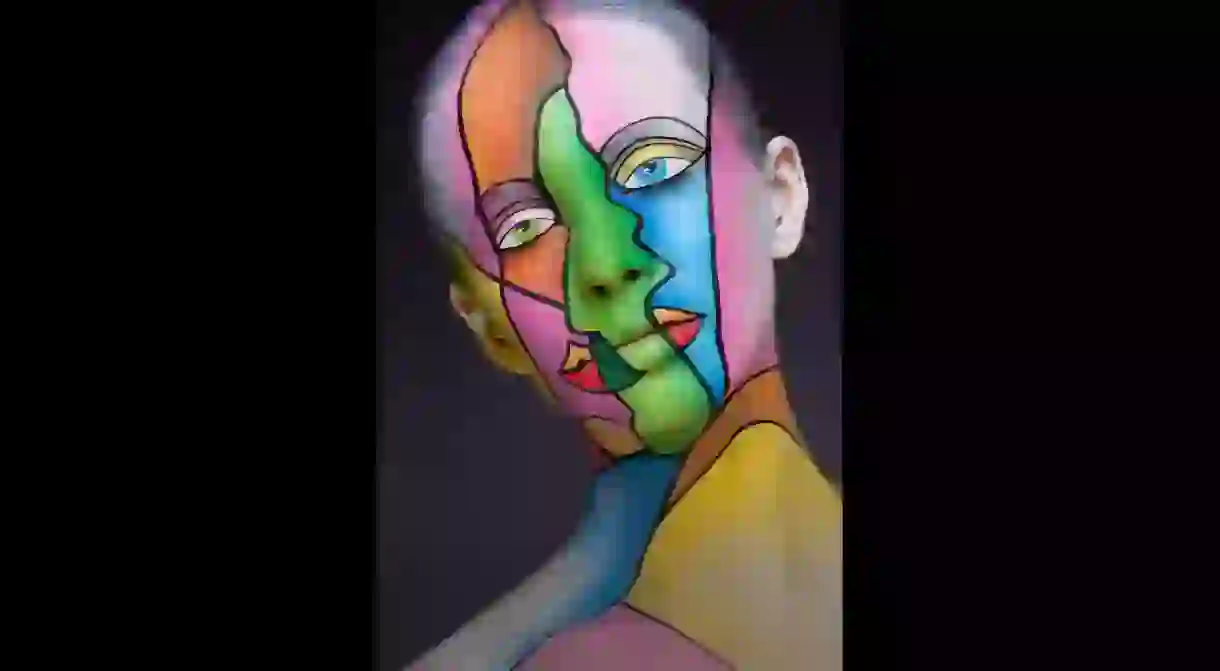Painting the Face of the World Cup in Russia

Moscow-based and Calcutta-born photographer, Alexander Khokhlov is best-known for his collaboration with make-up artists. Through the use of face paints, camera tricks, and many hours in the editing room, portraits of models are transformed to look like 2D posters. Photographs of models’ faces might be made to look like an Andy Warhol painting, Marge Simpson or even a recycling symbol – here’s how he does it.
Speaking from his studio in Moscow, Alexander Khokhlov is currently working with his wife and muse, Veronica on their latest – and first World Cup-themed – project. ‘The process of creating any image begins with ideas,’ Khokhlov notes. ‘How it comes up is difficult to explain.’
Taking inspiration from well-known logos and symbols, Khokhlov’s earlier work used models’ faces as canvases for visual illusions. Black and white face paint was applied to create a flattened, two-dimensional appearance. In one portrait, a model’s face was transformed into a wifi symbol and in another, a perfectly circular eight-ball. Each image can take up to six days to create; several hours for make-up, an hour to shoot and a few days to edit.
As the Art of Face project developed, Khokhlov moved away from logos and started to transpose well-known aesthetic themes to create what the photographer calls, ‘alive posters’. Line, space and colour were used to blur the boundary between photographs and famous paintings. In one image, a model’s face was transformed into a cartoon woman, reminiscent of an Andy Warhol-style painting. Another model’s face has been transformed to look like Obama’s ‘Hope’ poster.
Khokhlov’s latest venture is a collaborative project, celebrating Spain’s (short-lived) participation in the 2018 World Cup. Their latest visual illusion reimagines a football fan in the style of a Picasso. Why Picasso? ‘He is one of our most beloved artists, and probably the most famous and inspirational,’ Khokhlov explains. The face and torso serves as the canvas for a surrealist-cubist bull, in homage to the famous symbol of Spain.













